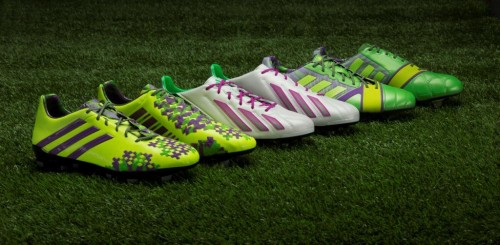Soccer is one of the most active sports ever played and it is quite popular in different parts of the globe. The soccer World Cup is organized in every 4 years in which different qualified countries participate to play against each other. The champion team is declared as the world champion. Since soccer happens to be a very active sport and is played in different weather and ground conditions, you need proper shoes in order to play soccer properly without injuring yourself. If you look at a soccer shoe carefully, you will notice that something protrudes out from under the sole of a soccer shoe. This is known as the cleats of the shoe. It is extremely important since it helps to provide proper grip of the ground to a player while he runs around the soccer ball.
Different Types of Cleats and Shoes
If you do some research, you will come to know that there are various types of soccer shoes and cleats in the market. These are meant for playing soccer in different weather and ground conditions. If you pick the wrong pair of soccer shoes, then it may result in damaged shoes and serious injuries. Here are some of the popular types of cleats used on soccer shoes that will help you understand which type to choose for which condition.
- Firm Ground Soccer Cleats: When it comes to playing soccer on a firm ground or natural grass, you will need to wear soccer shoes with classic soccer cleats or the molded cleats. Shoes that come with such cleats normally have a series of rubber or TPU or PU studs that are either conical in shape or bladed. These cleats are designed in such a way so that it provides you proper stability and traction on grounds that have natural grass and a firm ground.
- Soft Ground Soccer Cleats: These types of cleats will look somewhat similar to firm ground cleats. However, the soft ground soccer cleats are longer to provide you with added traction when you play soccer on muddy or wet fields. Most often than not, soft ground cleats will come with detachable studs or metal-tipped studs and are also sometimes referred to as metal soccer cleats. These studs can easily be removed and also customized to help you play soccer in varying playing and field conditions.
- Artificial Grass Soccer Cleats: It is true that most of the popular brands have stopped manufacturing soccer shoes with artificial grass soccer cleats. Instead, they have introduced cleats that come with hybrid firm ground or multi-ground outsoles. The only reason behind this is that artificial grass soccer cleats are very similar to firm ground cleats. The only basic difference is the studs being slightly circular in shape and shorter.
Parts of a Soccer Cleat
Choosing a correct pair of soccer shoes is not as simple as you may think. When you go shopping for such a pair of shoes, you have to ensure that you keep the insole, heel, and last counter in mind when you consider the fit. These happen to be the primary factors of a shoe that impacts the overall fit. The touch of a shoe is impacted by the vamp and the upper and when it comes to traction, you need to focus on the outsole.
- Insole: This is the cushioning part inside the soccer shoe right beneath the foot. It can either be attached or removable. Sometimes, it is also referred to as a sockliner.
- Vamp: This is the front portion of the upper, sometimes also known as the strike zone. This is because this part of the soccer shoe comes in contact with the ball. You will notice that some vamps are either knitted or stitched, whereas, some come with added technologies to enhance ball control and shot power.
- Midsole: This happens to be the cushioning built into the shoe. Some popular brands add cushioning materials that are normally found in running shoes. They place them in the soccer cleats or shoes. It is important for you to understand that the material may differ between brands and also the shoe’s tier level.
- Last: This is the 3-dimensional foot model basically on which a shoe is made. The last gives the shape and size to shoes. On some shoes you will notice the term “wide last” which basically means that it was made for people with wide feet.
Soccer Cleats by Their Positions
- Midfielders: Control cleats are specifically made around the play-making midfielder and these are designed in such a way that these offer slightly more padded touch with better protection that speed cleats.
- Forwards: Speed cleats are normally geared for strikers and forwards, since they are generally faster than other players on the fields. These are lightweight and usually offer a barefoot touch on the soccer ball.




